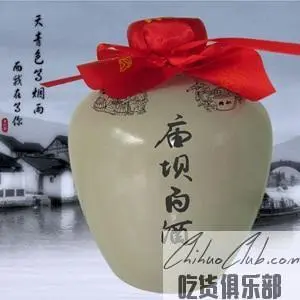
Miaoba Liquor
-
Update date::
-
Date of protection::
-
Protected range:The production area of Miaoba liquor is the administrative area of Yanjin County, Zhaotong City, Yunnan Province.
-
Category:
Miaoba white wine is known as “Wuliangye” of Yanjin. It is mainly made from grains such as corn and sorghum. It is made by cooking, saccharifying, fermenting, distilling and aging. It is pure and bright, famous and fragrant. Mellow and long aftertaste.
Yanjin Miaoba Liquor is famous for its pure taste, elegant and elegant taste. It is known as “Yanjin Wuliangye” in the folk, and has a certain reputation in the city and surrounding areas such as Kunming. It is inexpensive and popular. The local liquor variety Miaoba brewed Wuliangye. It is one of the raw material wine supply bases of Yibin Wuliangye Group. The main raw materials of Miaoba self-brewed Wuliangye are sorghum, corn, glutinous rice, millet, wheat, and pure natural spring water. The traditional long process is natural fermentation without any additives. It is brewed through several processes. Main features : It is fragrant, mellow, good in taste, not on the head after drunkenness, and does not hurt on the second day; it enjoys a good reputation in the Zhaotong area, almost every Bengbu, hotel, food stall.
Technical requirements for the quality of Miaoba liquor 1. Raw materials 1. Corn: Select high-quality corn with a starch content greater than or equal to 65% in the producing area, and the quality should meet the relevant national standards. 2. Second, the production process 1. Production process of koji: raw materials (wheat bran, flour) → ingredients → mixing → adding water → stirring → stepping → entering the house culture → pre-fermentation → tidal wave → turning → upper wall → maturity → post-fermentation → inspection → Standby. 2. Quality picking wine (tatou to tail) → check tune → evaluation → finished product. Third, the production of key control points 1. Soaking grain: After putting the corn into the bubble pool, clean the corn with cold water, then put it into cold water, the water level is 10 cm above the surface, soak for 2 hours - 3 hours, then open the steam valve to raise the water temperature to 80 °C - 90 °C Soak for 10 hours - 14 hours. After soaking, rinse off the odor and impurities in the corn with water, then load the corn into the tweezers for initial steaming. 2. 15 cm, warming, so that the water temperature reaches 80 ° C, cooking for 50 minutes - 60 minutes, when the corn break rate reaches 85% -90%, use the fingers to test the corn kernels, if soft and elastic, start to filter water, so that The boiled grain water is thoroughly filtered and then re-steamed. 3. Re-steaming: cover the lid and let the temperature reach 75 °C-80 °C for 15 minutes. When the corn is soft and not sticky, when the crack rate is above 95%, the open lid is heated to 100 °C-120 °C for 40 minutes. After 50 minutes, after draining the water, the corn in the sputum was evenly spread on a cold bed, and cooled down. 4. Low-temperature saccharification culture: After the corn is sufficiently cooled, it is sprinkled with koji, which accounts for about 0.5% of the raw corn, and is sprinkled twice and stirred evenly. Then enter the box of saccharification and culture bacteria, according to the climatic conditions of the four seasons, the cultivation time is usually 24 hours - 36 hours, so that the wine cellar is clear and bright, slightly sweet and not sour, and then enter the secondary saccharification culture. 5. Secondary saccharification and cultivation: Add 0.1% koji to the gluten and stir evenly. After 1 hour, add the wine cellar. The amount of the gluten is 1.5 times that of the wine cellar, cool down to 25 °C, and then enter the mash for secondary saccharification. The temperature was raised to 38.5 ° C and resealed for anaerobic fermentation, and distillation was carried out after 25 days. 6. Distillation: The bottom pot is properly drained. The fermented wine cellar is subjected to steam pressurization, and the temperature in the pan is maintained at 75 ° C - 80 ° C for distillation, and the taro is removed after the wine is discharged. Finally, carry out the rear-end of the big steam to maintain the quality of the bad. 7. Storage: in line with national standards. 8. Fourth, the quality characteristics 1. Sensory characteristics: The project requires a high degree of alcohol and low color, and the appearance is clear and transparent or yellowish transparent, no suspended matter, no sedimentation. The fragrance is pure and fragrant, with a light aroma of corn and fragrant complex. The fragrance is outstanding and pure. The taste of the wine is pure, pure and sweet, and the taste is smooth. The fragrance of the wine is pure, pure and sweet, and the aftertaste is smooth. The style has a corn-flavored white wine style. It has a corn-flavored white wine style. 2. g/L) ≥0.70.5 solids (g/L) ≤0.50.7 ethyl acetate (g/L) ≥0.30.3 methanol (100% alcohol conversion) (g/L) ≤0.60.6 Note: When the temperature of the wine is below 10 ° C, white flocculent precipitation or loss of light is allowed. 3. Safety and other quality technical requirements: Product safety and other quality technical requirements should comply with relevant national standards.
Apply to:
Producers within the scope of the production of Miaoba liquor may submit an application to the Yanjin County Market Supervision Administration for the use of the “Special Mark for Geographical Indication Products”, which shall be reviewed by the Yunnan Provincial Bureau of Quality and Technical Supervision and reported to the General Administration of Quality Supervision, Inspection and Quarantine for approval. The inspection agency of Miaoba liquor is selected by the Yunnan Provincial Bureau of Quality and Technical Supervision in the inspection institutions that meet the qualification requirements.